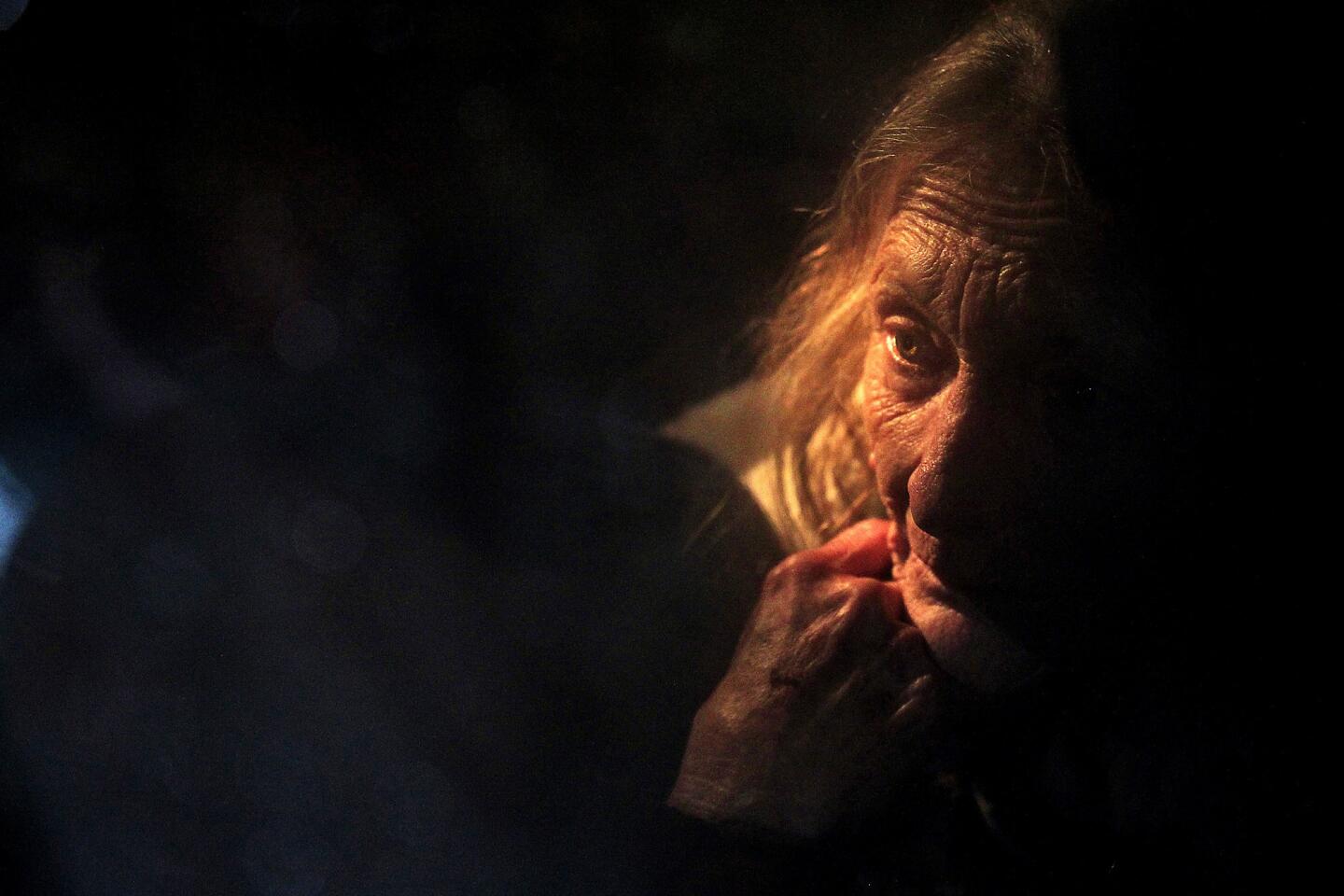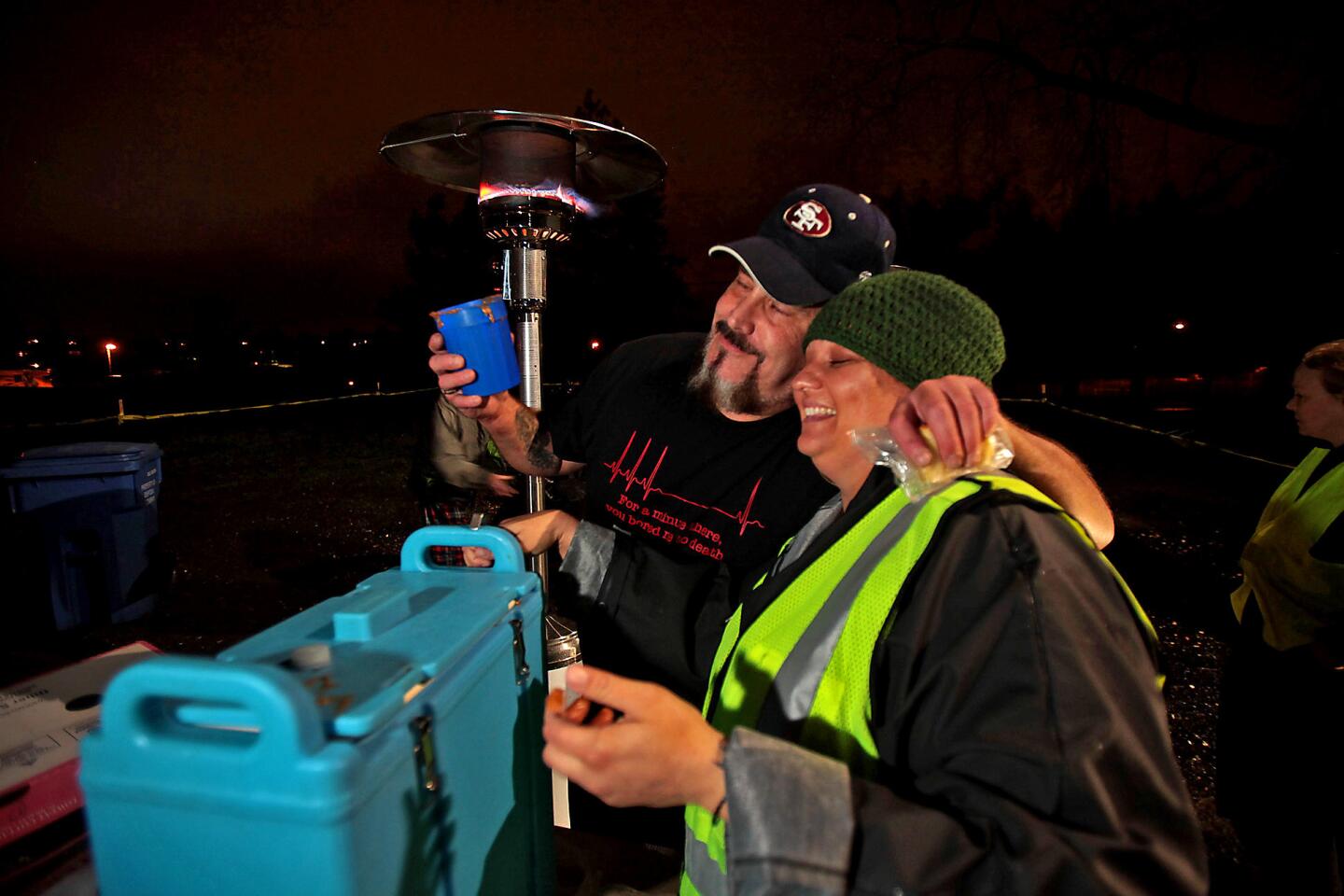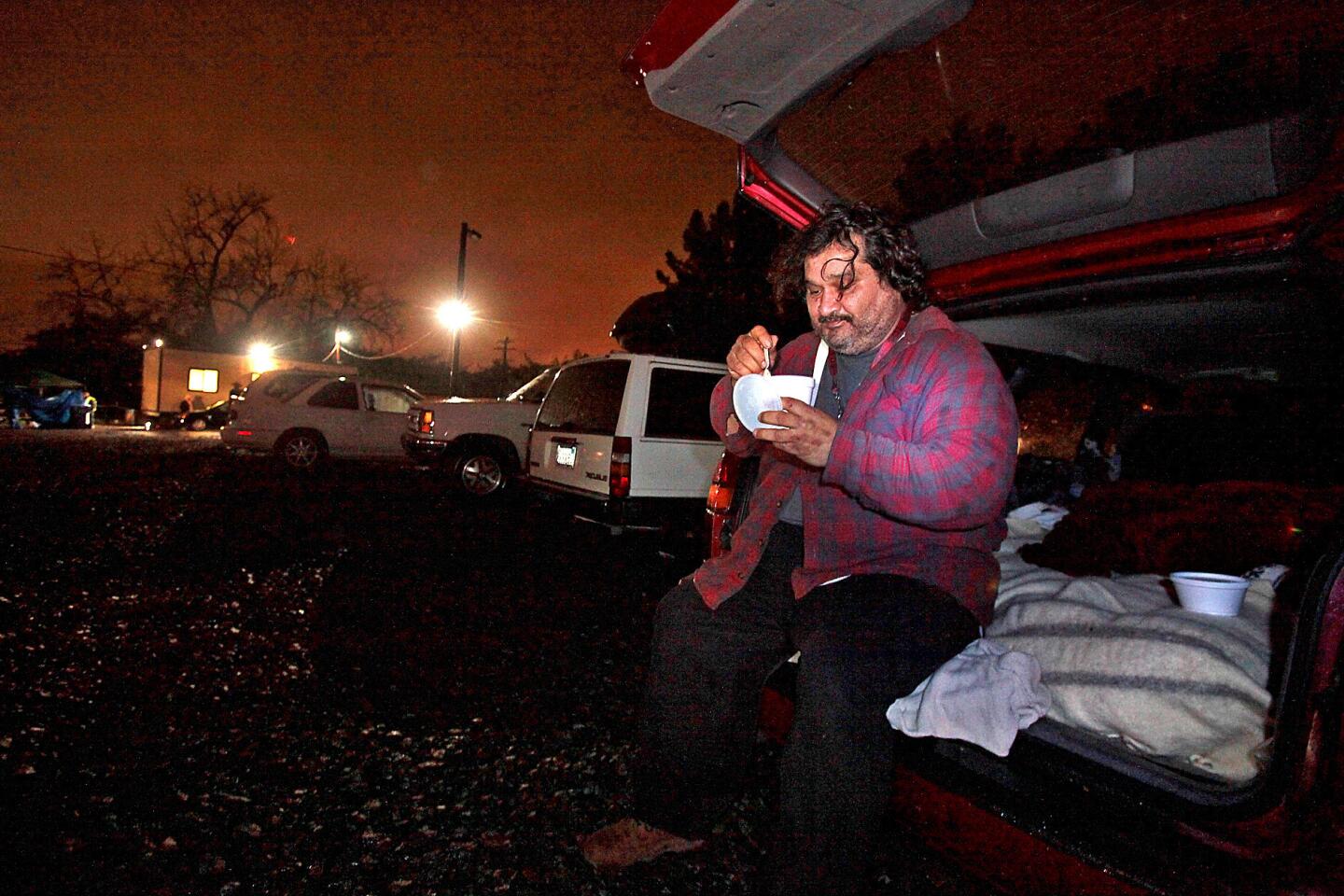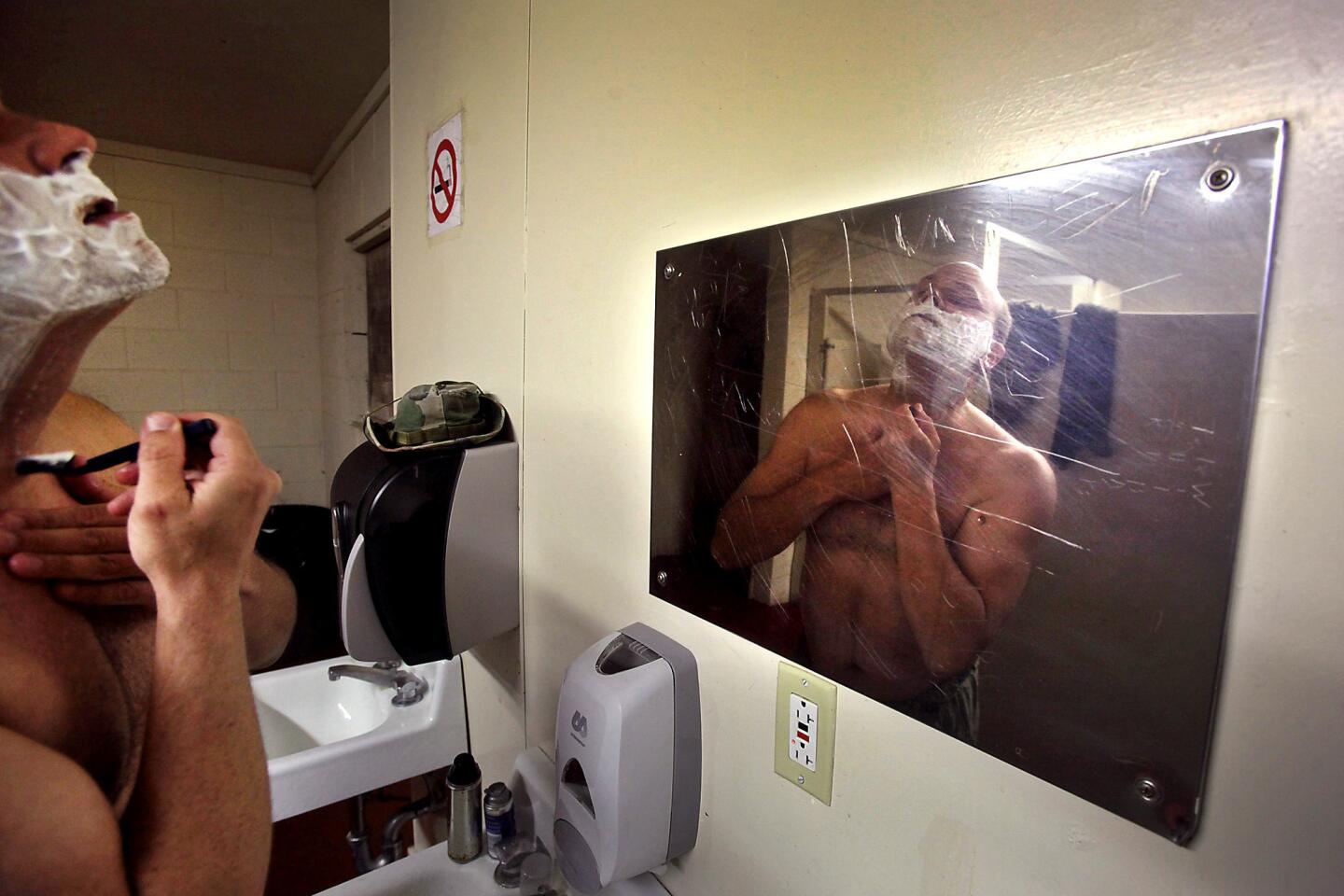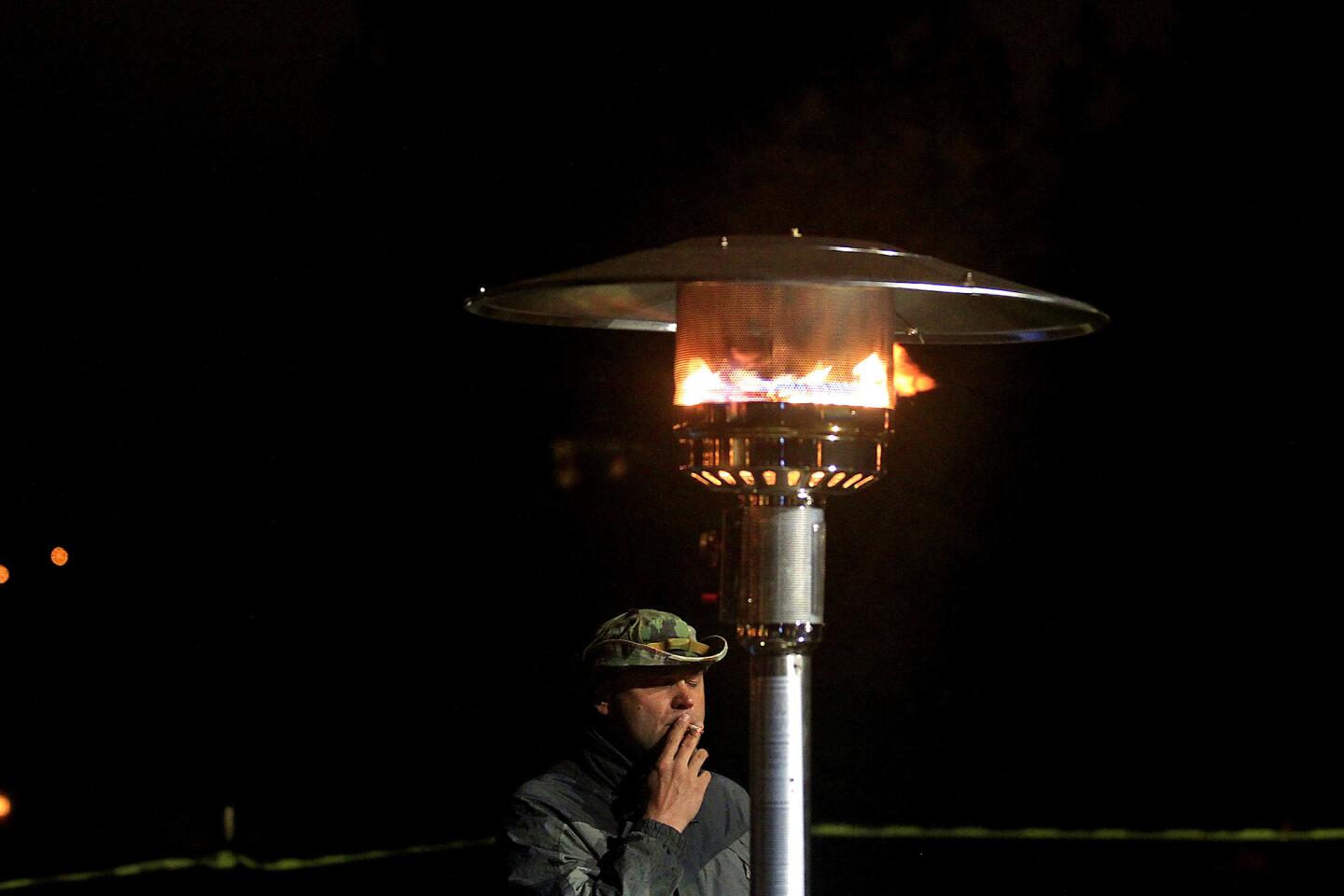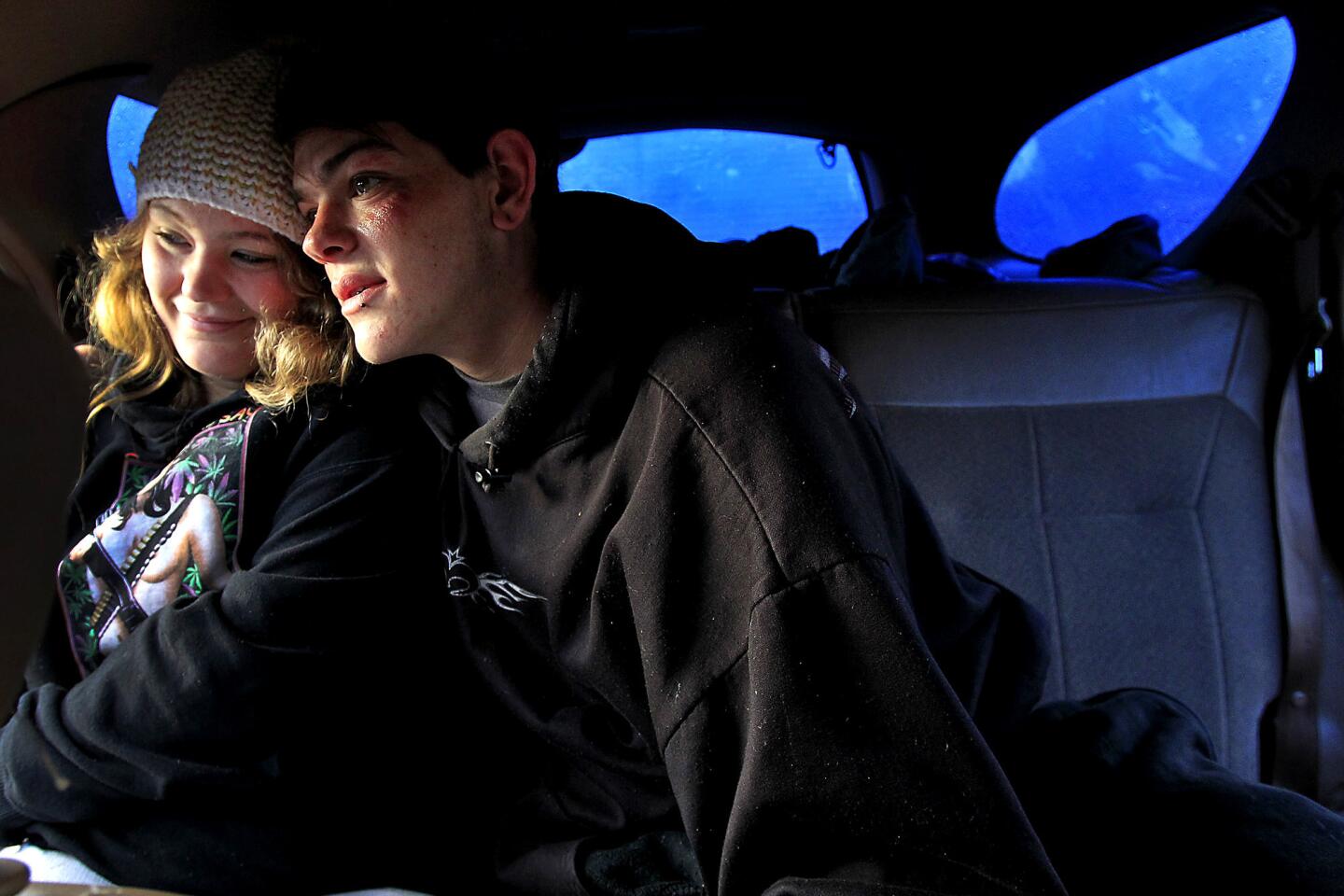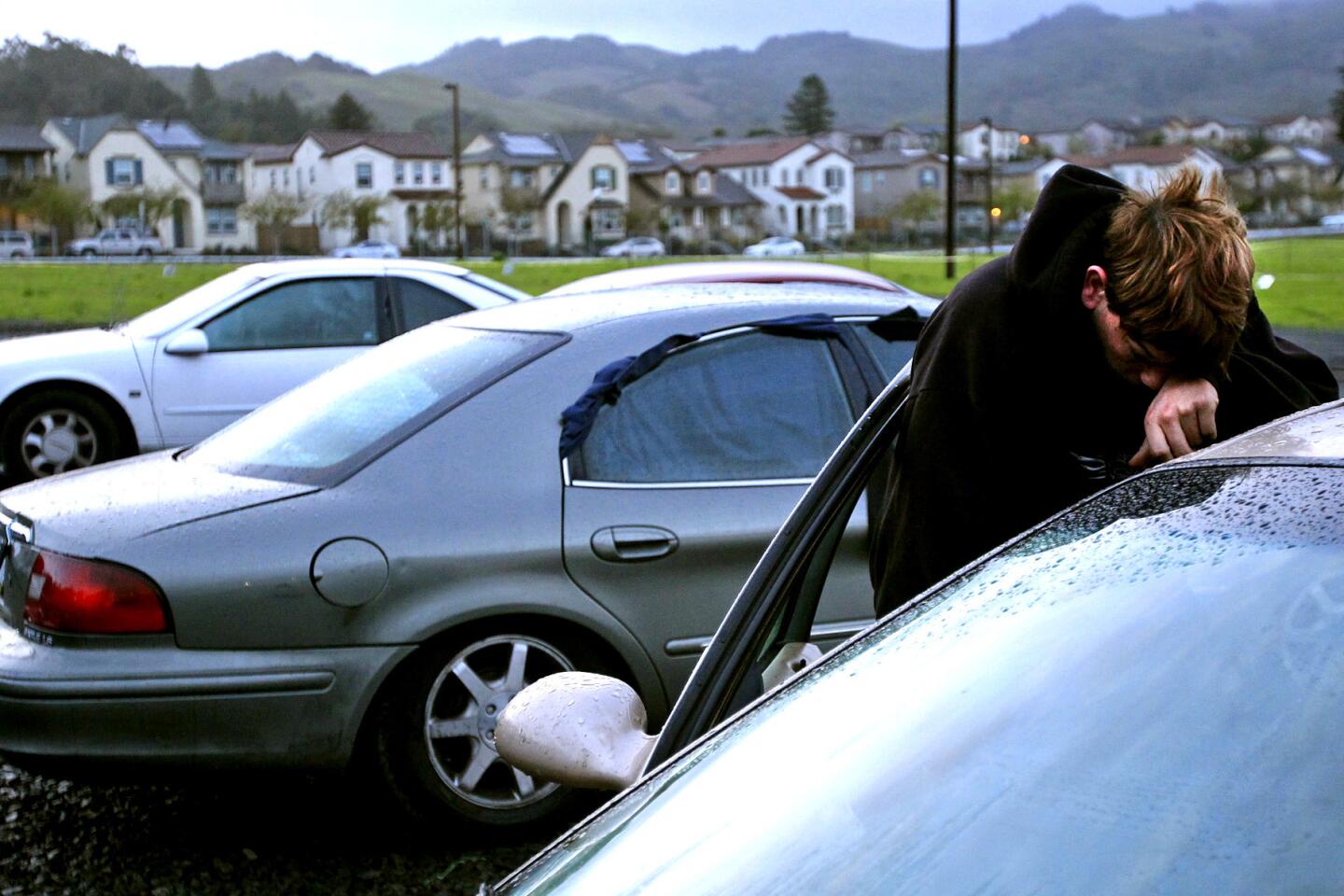In Sonoma County, a heartwarming safe-parking program for the homeless
- Share via
SANTA ROSA, Calif. — As a cold rain pelted the parking lot, the gates opened and the cars began to roll through.
In an aging Nissan was a 74-year-old longtime farmworker whose landlady had booted him to raise the rent. A 65-year-old disabled woman pulled her Ford Fusion up to the small trailer, where she could at last plug in her sleep apnea machine.
Then there was Patsy Perez, 55, who had learned about the fledgling “Safe Parking” program at the county fairgrounds lot after pleading to spend the night in her Volvo outside a downtown shelter.
“I think it’s heaven-sent,” said Perez, who since losing her housing two months ago said she has often been rousted by police or “messed with” while trying to catch some sleep in her car.
The Sonoma County Board of Supervisors created the safe parking program in late January as an emergency response to freezing weather, making it one of just a handful on the West Coast. (Similar programs operate in Santa Barbara County, San Luis Obispo and San Diego County.)
But lawmakers here went one step further. In what Sonoma County advocates for the homeless called a “pinch me” moment and a “watershed,” supervisors removed a ban on the “use of vehicles for human habitation” from the county’s anti-camping ordinance.
“Our mantra is decriminalization,” said Supervisor Shirlee Zane. “It was just stupid to say it’s illegal to sleep in your car. For some people, all they own is their car.”
“It’s definitely cutting against the trend,” said Jeremy Rosen, policy and legal director of the National Law Center on Homelessness and Poverty, which has tracked ordinances across the country that ban sleeping and camping in public spaces. “They’re saying we understand that people in this economy don’t have any place to go.”
::
The catalyst was a cold snap.
Jennielynn Holmes, director of shelter and housing for Catholic Charities of the Diocese of Santa Rosa, which operates the safe parking program under county contract, awoke to a 19-degree December morning and headed to her drop-in center to hand out oatmeal.
“A man walked up to me and his entire face and beard was covered in frost,” Holmes said. “I just said, ‘That’s not OK.’ I canceled my meeting and warming stations were open by that night.”
Holmes had allies at the Board of Supervisors, Zane among them. She was doing her own hand-wringing. In Santa Clara County, four homeless men had frozen to death on the streets. She dialed the county administrator and said, “Nobody is going to freeze here,” she recounted.
Momentum for solutions had been building since fall, when Georgia Berland, who launched the Sonoma County Task Force for the Homeless three decades ago, teamed up with the nascent Elder Advocates for Community Health and activists from Santa Rosa’s Occupy movement.
Safe parking for those with vehicles — an estimated 20% of the 3,300 homeless county residents living outside — was on their list, and the board seized the opportunity.
By late January, they settled on the fairgrounds lot and unanimously moved to expand motel vouchers and change the law that banned “inhabiting” vehicles.
Berland was among those who stepped to the podium during the recent board meeting. “This morning is like a miracle to me,” she said.
A former campsite for equestrians, the fairgrounds lot has restrooms and showers. In deference to neighbors, however, the program will probably close by spring, as the board and advocates seek to replace it with one that uses private church and other lots.
Housing may be pricier in San Francisco or Santa Clara counties, but Sonoma County has one of the state’s highest costs of living when wages are taken into account. Homelessness has been exacerbated by the recent recession and a 1% apartment vacancy rate. The death of redevelopment agencies has slowed affordable housing construction. Shelter waiting lists are long.
As supervisors push for long-term solutions — among them a recently launched veterans housing program — they hope to ensure that short-term needs are met.
“This is a Band-Aid but it’s an important Band-Aid,” Zane said. “There’s an opportunity in everything — even in this cold weather.”
::
The community has stepped up.
With temperatures low, donors dropped outdoor propane heaters at Catholic Charities’ doorstep. At the parking program’s small trailer on the recent night, Perez helped herself to a complimentary Marmot rain jacket, pillow and comforter. A box of brightly colored hand-crocheted hats beckoned.
Of nearly 100 vehicles that have come through since February, data show, about a third of occupants have been homeless once or twice before.
“We’re meeting people where they are, offering dignity and a shower, and engaging them,” Holmes said.
Frederick Helmke, 55, attended Stanford University and once had a home and business. But it all unraveled. Three abdominal surgeries and other personal issues left him struggling. He bought a decrepit 1971 El Dorado camper from a desperate friend a few years back — for $38.40 — and that has been home.
He’s come to the fairgrounds lot since the program began. “It’s taken awhile for it to sink in that I don’t have to sleep with one eye open, waiting for someone to bang on the door and tell me to move on,” Helmke said.
Vehicles must pull in between 8 and 10 p.m.; then it’s lights out. No belongings are allowed outside the vehicle footprint, and no on-site drug use or drinking is tolerated. Everyone must be out by 8 a.m.
A full third of those who have come through are homeless for the first time, 36% have had no previous contact with county social services and 35% have pets.
Lea Glynn, 24, was an in-home care worker who lost her housing when her grandmother died last summer. She and her boyfriend, 20-year-old Cody Wertz, found a rented room, but it didn’t last. A stint with Glynn’s ill mother ended because she couldn’t handle their dogs.
A case manager is now working to help them find housing and employment.
Shortly before 10 p.m., Tom and Allison Dunn pulled up in their 2002 Mercury Sable. Their two high-school-aged children were with friends in the Marin County town of Novato, where the Dunns once owned a 5,200-square-foot home.
Tom, 57, held software industry jobs for years, before recession, unemployment and a 2009 foreclosure turned his world around. He and Allison, 49, both developed health problems. They’ve now saved cash for housing, but with poor credit, no landlord will have them.
The safe parking program, Tom Dunn said as he huddled by a propane heater at dawn, “has been amazing.”
“Just to be safe, with a little warmth,” he said, his voice trailing off.
More to Read
Sign up for Essential California
The most important California stories and recommendations in your inbox every morning.
You may occasionally receive promotional content from the Los Angeles Times.

